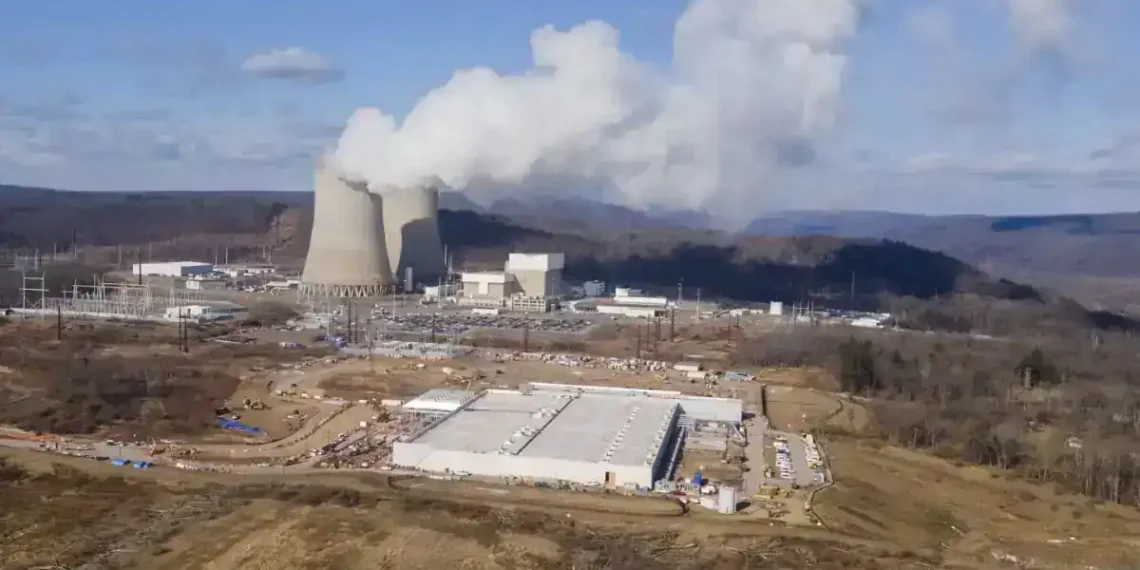Amazon’s $20 Billion Bet on Pennsylvania: Two Data Centers, One Nuclear Power Deal, and a New Era for Tech Infrastructure
By AP – June 10, 2025
Amazon is making waves in Pennsylvania—and not just for its size. In what state officials are calling the largest private-sector investment in Pennsylvania history, the tech giant has announced a $20 billion plan to build two state-of-the-art data center campuses. One of them is already under construction—right next to a nuclear power plant.
It’s a bold move with big implications, not just for Amazon Web Services (AWS), but for the state’s economy, energy strategy, and role in the future of artificial intelligence (AI) and cloud computing.
Two Mega Campuses: High Tech Meets Local Roots
The two planned data centers will anchor Amazon’s growing East Coast digital footprint. The first is rising beside the Susquehanna nuclear power plant in Berwick, in northeastern Pennsylvania—a location that has already sparked attention from federal regulators due to Amazon’s energy strategy (more on that shortly).
The second campus will be located at Fairless Hills, just north of Philadelphia, on the grounds of the former U.S. Steel mill, now part of the Keystone Trade Center—one of the largest industrial redevelopment projects in the state.
Speaking at a press conference in Berwick, Governor Josh Shapiro hailed the announcement as a sign that Pennsylvania is entering a new era of high-tech economic development.
“This is just the beginning,” Shapiro said. “We’re working with Amazon on more projects that will bring opportunity to communities that have been overlooked for far too long.”
What’s at Stake: Jobs, Training, and Long-Term Growth
Critics of data centers often note that they require relatively few permanent jobs to operate. But state officials—and Amazon—are betting on the broader economic ripple effects.
The construction phase alone will demand thousands of skilled laborers, generating short-term job booms in construction, electrical work, and logistics. In addition, Amazon will pour tens of millions into local businesses for services, supplies, and operations support.
Shapiro’s administration is investing $10 million into workforce training programs through local schools, community colleges, and union training centers. The goal: to prepare a pipeline of Pennsylvania workers for jobs in cloud technology, electrical engineering, and data center maintenance.
Amazon, for its part, will also benefit from state-level sales tax exemptions for critical infrastructure like servers, routers, and cooling systems—common incentives offered by states vying for big-tech infrastructure projects.
Powering the Cloud—with Nuclear Energy
The most headline-grabbing detail? Amazon’s plan to plug one of its data centers directly into a nuclear power plant.
This “behind-the-meter” deal would allow AWS to draw power straight from the Susquehanna nuclear facility, skipping the congested regional electric grid and gaining faster, more reliable access to the megawatts needed to run massive computing clusters.
The deal—valued at $650 million—would eventually provide 960 megawatts of electricity, or about 40% of the plant’s total output. That’s enough to power over 500,000 homes, underscoring the sheer scale of energy required for modern data centers, especially those built to handle next-gen AI workloads.
But the plan isn’t without controversy.
The Federal Energy Regulatory Commission (FERC) has temporarily blocked the deal on procedural grounds, marking the first time the agency has been asked to rule on a behind-the-meter arrangement of this scale. Critics argue it raises equity and reliability concerns, suggesting that large tech firms could avoid grid costs that smaller users still bear—and potentially drive up rates or strain availability elsewhere.
The AI Arms Race Drives Demand
This move isn’t happening in a vacuum. Amazon is in the midst of a multi-billion-dollar expansion of its AWS infrastructure to keep pace with rising demand for cloud services and AI computing. Since early 2024, Amazon has pledged $10 billion each to build data centers in Ohio, Indiana, Mississippi, and North Carolina.
This investment wave is driven by the exploding use of AI models, cloud-based applications, and data analytics, which require constant access to high-density servers—and a massive, steady flow of electricity to keep them cool and operational.
“Data centers are the engine rooms of the digital economy,” said Kevin Miller, AWS vice president of global data centers. “They’re where cloud meets reality.”
Pennsylvania’s Tech Energy Transformation
Amazon isn’t the only company betting big on Pennsylvania’s future as a tech and energy hybrid hub:
- Microsoft recently signed a 20-year deal to restart the shuttered Three Mile Island nuclear reactor to power its data centers across four states.
- A separate developer is converting the former Brunner Island coal-fired power plant into a $10 billion natural gas-powered data center campus.
These projects reflect a deeper trend: the shift from traditional fossil-fuel-based industries to digital infrastructure powered by cleaner, more stable energy sources like nuclear and natural gas.
Pennsylvania, long known for its steel, coal, and manufacturing heritage, may now be carving out a future as a data and energy corridor for the 21st century.
What’s Next?
Amazon’s $20 billion investment is expected to unfold over several years, with construction and regulatory approvals still in progress. But one thing is clear: this isn’t just a story about buildings full of servers.
It’s about the intersection of tech, energy, and economic revival, and whether states like Pennsylvania can leverage their industrial past—and energy-rich landscapes—to become pillars of the digital economy.
As the AI revolution accelerates, the real infrastructure battle may be less about code—and more about who controls the power behind it.
This article was rewritten by JournosNews.com based on verified reporting from trusted sources. The content has been independently reviewed, fact-checked, and edited for accuracy, neutrality, tone, and global readability in accordance with Google News and AdSense standards.
All opinions, quotes, or statements from contributors, experts, or sourced organizations do not necessarily reflect the views of JournosNews.com. JournosNews.com maintains full editorial independence from any external funders, sponsors, or organizations.
Stay informed with JournosNews.com — your trusted source for verified global reporting and in-depth analysis. Follow us on Google News, BlueSky, and X for real-time updates.














